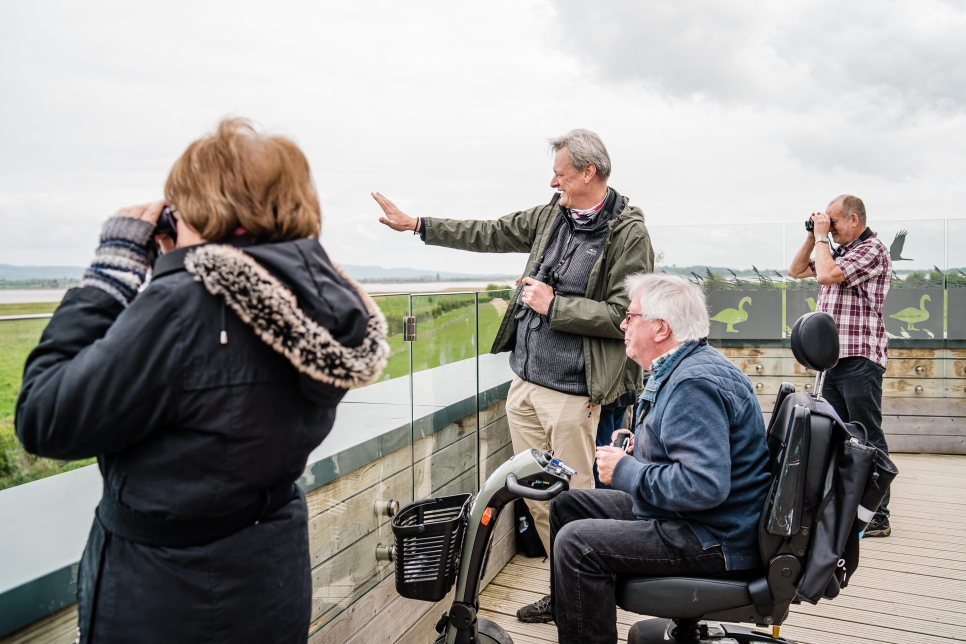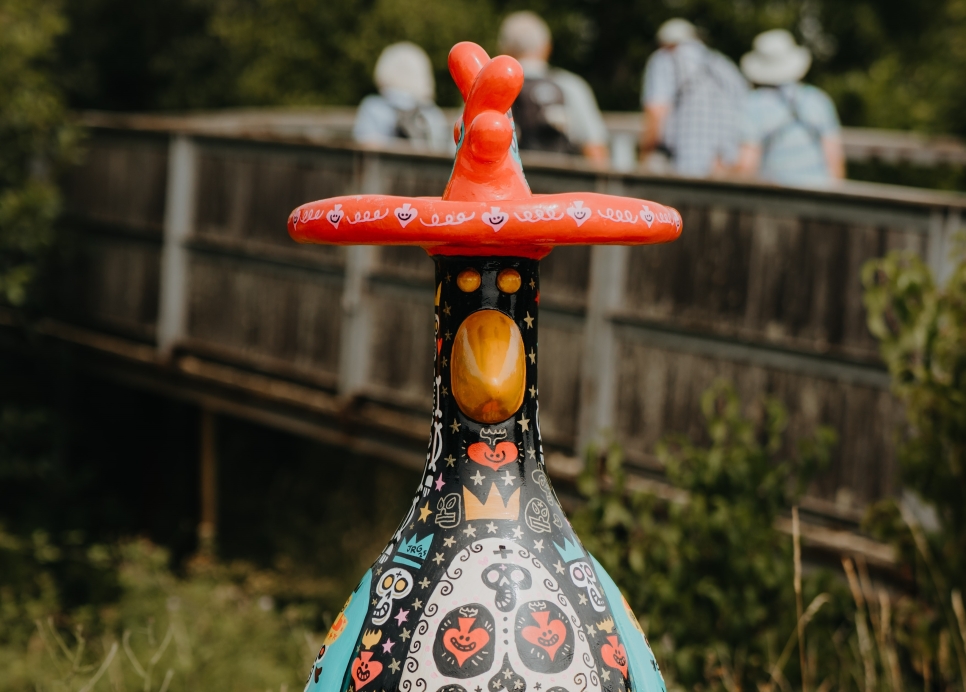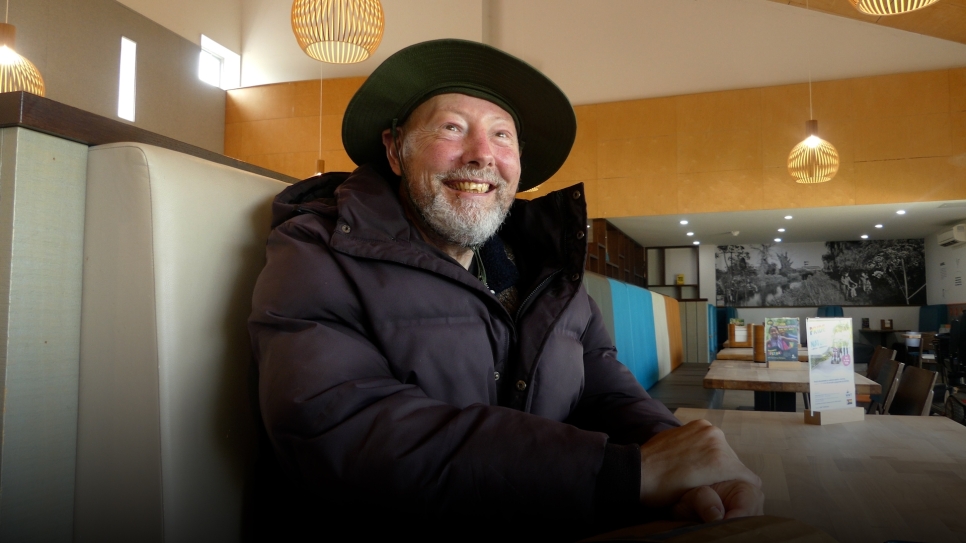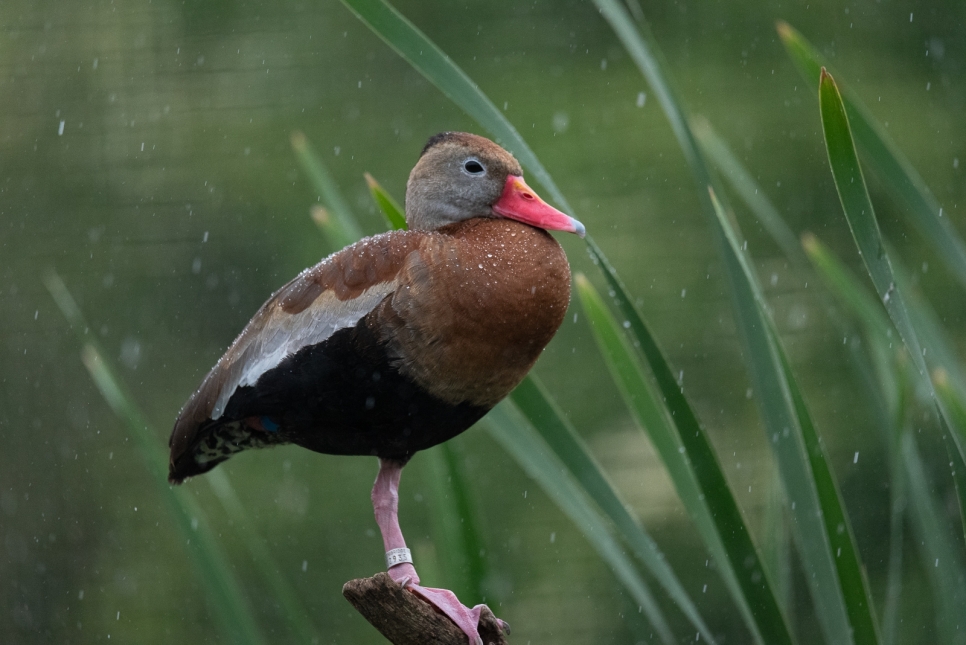These lawnmoo-wers keep our reserve in peak condition

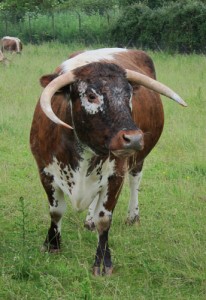 A very special breed of cow is helping WWT Slimbridge Wetland Centre keeps its nature reserve in top notch condition.
A very special breed of cow is helping WWT Slimbridge Wetland Centre keeps its nature reserve in top notch condition.
Over the years wetter winters have altered the habitat on the reserve at Slimbridge and made some areas unsuitable for many breeds of cattle to graze.
But Ken Moss, a local farmer and our reserve manage Dave Paynter realised that Longhorns, an ancient native breed of cow, would be ideally suited for the job of grazing– and also were evocative of the wild Aurochs which roamed this very landscape 4000 years ago.
The small herd of Longhorns arrived here in the spring and since then have done a fantastic job of maintaining an open rich habitat while delighting visitors in the process.
The salt marsh pasture created by our reserve’s location next to the Severn estuary means cattle reared on it produce the very finest beef.
The Longhorn breed grows slowly but can convert the poorer quality fodder seen in wetter fields into the highest quality beef renowned for its flavour. The first beef from this herd will be available from 2014 onwards.
Mr Paynter, the reserve manager at Slimbridge, said: “The results so far have been very encouraging. The herd has thrived on the wet grassland and have shown a particular preference for the reeds and rushes which were threatening to take over parts of the fields.
It took a while for them to get confident enough to wade across some of the shallow water areas to access some of the island but are now getting to every corner of the site.
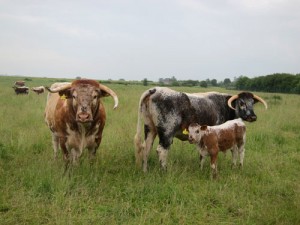 “The trampled edges of the water are proving very attractive to passage wading birds and it is hoped that the increased grazing will further promote flower diversity across the site as well as improving grass quality through natural manureing of some areas which should prove attractive to the grazing waterfowl in the winter.”
“The trampled edges of the water are proving very attractive to passage wading birds and it is hoped that the increased grazing will further promote flower diversity across the site as well as improving grass quality through natural manureing of some areas which should prove attractive to the grazing waterfowl in the winter.”
The short grassy pastures of the high salt marshes here at Slimbridge are a rare natural habitat found in only a few places on the western sea board of Europe with exceptionally high tidal ranges.
At over 14 metres high the Severn has the second highest tidal range in the world.
Historically these areas were the chosen feeding grounds of large herbivores such as Red Deer and Auroch (wild cattle) and the ancestral reason for our three commonest wintering birds, Bewick`s swan, white fronted Goose and wigeon all of which are grazing animals, to come here.
As our ancestors colonised the area this habitat became important for farming by providing an open landscape superb for fattening cattle. The management of the Slimbridge reserve today relies on maintaining this open landscape through continued grazing.
